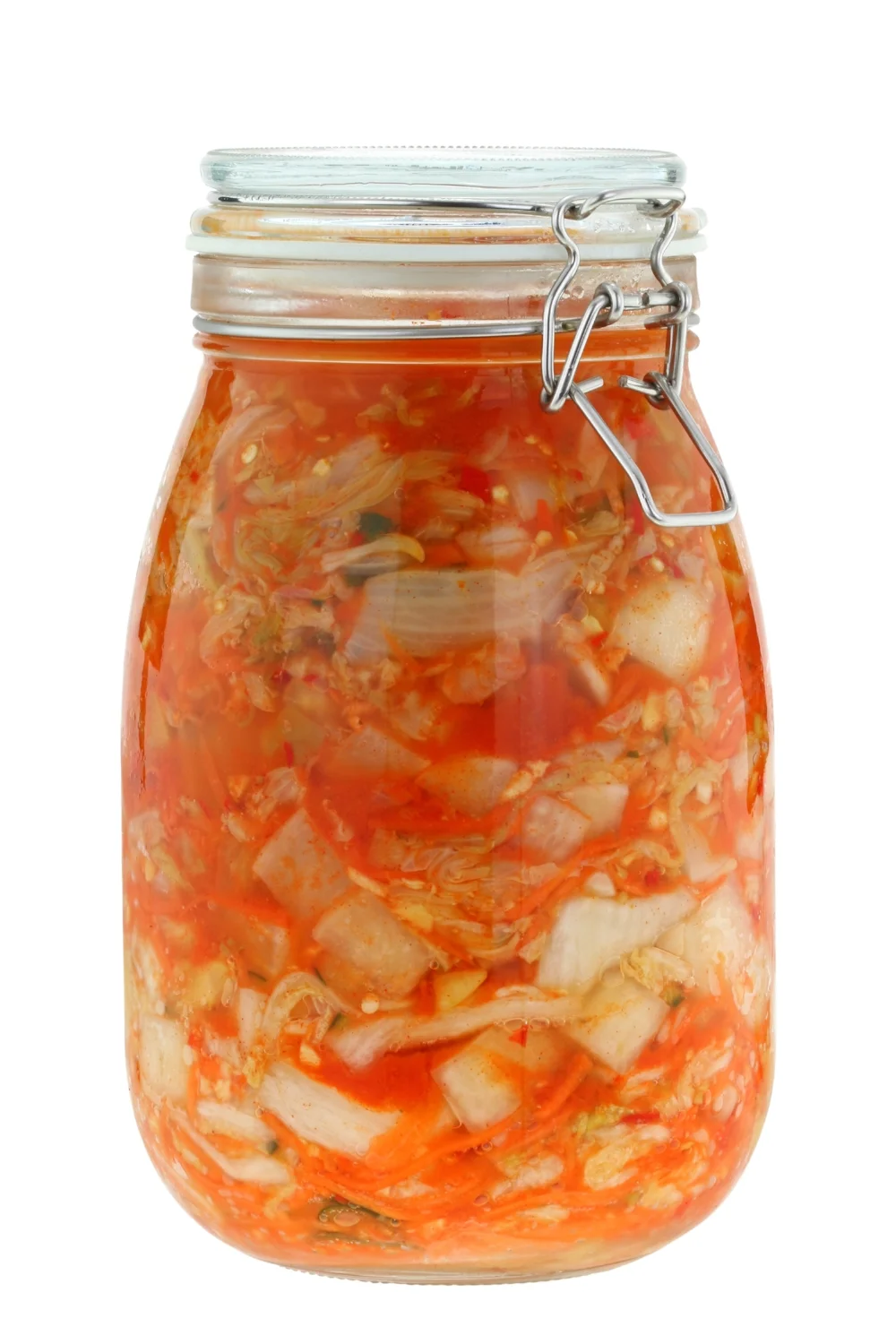Fermented Beetroots & Thyme
This post contains affiliate links to products that I use myself or can recommend. My affiliate policy.
Here we go again. I’m a fermentation maniac these days. Maybe it’s the weather. I haven’t seen much of the sun for the last few months, so besides being lazy and thoughtful, I ferment.
Being a Northerner in the winter is challenging for the mood. The cold and the no-light situation are the opposite of cheering. But the homemade bacteria in various forms brewing in my kitchen (kombucha, salsa, yogurt, kraut…) spark my mood (and my immune). Not because of the cooking activity – no, it’s eating the stuff that does it, because they boost my serotonin – the happy hormone.
This is a tasteful, easy, and quick fermentation recipe, where the beets and thyme compliments each other wonderfully.
MORE: All about the Benefits of Probiotics and Fermentation
Recipe
EQUIPMENT:
Ingredients:
20 g salt (20 g of coarse sea salt to 500 ml. Water = 4% brine)
15 g garlic
10 g thyme (fresh)
1 bay laurel leaf
550 g beetroots
50 g cabbage (to start the fermentation)
10 g of whole peppers
Instructions:
Peel the garlic and place the whole cloves at the bottom of the patent glass.
Add thyme, peppers and bay leaf to the jar.
Wash beetroots and peel.
Chop beet in to smaller cubes, and place in the jar.
Remove one of the outer leaves of the cabbage and put it aside.
Place the 50 g. cabbage in a food processor and pulse until finely chopped - or you can simply chop it finely with a vegetable knife.
Mix your brine by adding 20 g of salt to 100 ml of boiling water. Stir well to allow the salt to dissolve, then add the remaining 400 ml of cold water to bring the brine to room temperature.
Pour the brine over the beets and the other ingredients until all is well covered.
Cut or fold the reserved cabbage leaf to fit on top of the mixture and press it down so that the brine is above the leaf. Seal the jar and place out of direct light.
Allow to ferment for 5 to 7 days at room temperature. Warmer temperatures will speed up the process, cooler will slow it down.
The lid must be opened every day to allow the jar to “burp” (release built-up gases).
Taste your kraut after 5 days. When you're happy with taste, transfer to a cooler temperature. Place it in the cellar or in your refrigerator. This will slow down the fermentation process, allowing you to keep it for several months.
Use:
Serve with meat, eggg, fish dishes or with rice or other vegetables.
General thoughts on fermentation:
Start slow. If you are new to fermented foods, start with very small portions and proceed slowly.
The ideal temperature for lacto-fermentation of fruit and vegetables is 22 degrees.
Taste your ferment every day. There's no special moment at which a ferment is "ready" - it's all a matter of taste. After just a day or two, the ferment will develop a tang. Keep tasting it every day until it reaches the level of tartness you want.
A good sign that your vegetables will be ready is when you open the jar and there is a sour (think vinegar-y) flavour, and bubbles start to travel up the inside of the glass when tapped or moved. At this point, transfer to the fridge, where they will continue fermenting, but at a much slower pace.
Mold. If some vegetables emerge at the top of the liquid, they may develop a layer of mold. Simply scrape this off and make sure the remaining vegetables are weighted under the liquid. The mold is harmless and will not ruin the ferment.















